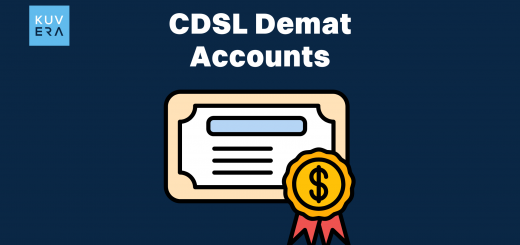Are you confused between choosing active vs passive funds India? Active and passive funds India are two distinct investment strategies – each with unique methods for generating returns.
Actively managed funds employ a portfolio manager or team who makes decisions about how to allocate assets in order to outperform a benchmark index. On the other hand, passive funds India types like index funds or ETFs aim to replicate the performance of a specific benchmark index (e.g. the Sensex or the Nifty) without trying to outperform it.
Research indicates that over the long term, most active funds struggle to outperform their benchmark indices, particularly after accounting for fees. In contrast, passive investing has gained traction, especially during bull markets as average index funds often surpass the performance of many actively managed funds.
Difference between Active vs. Passive Funds India
| Particulars | Active Funds India | Passive Funds India |
|---|---|---|
| Returns | The goal is to achieve higher returns than the benchmark through research, market timing and stock selection. However, performance can be inconsistent - some actively managed funds outperform their benchmarks while others may underperform. | Passive funds India returns closely match the performance of the benchmark, minus any fees. Over the long term, passive funds India often outperform active funds after accounting for fees. |
| Costs | Higher fees due to management expenses, research and transaction costs which can eat into returns. It ranges from 1.5% – 2.0% of AUM. | Typically have lower fees since they require less active management and trading. Generally, up to 0.50% of AUM. |
| Risk | Higher potential for both higher returns and losses due to the reliance on manager skill and market timing. | Less volatile than active funds since they are tied to a broad market index. However, they won’t outperform the market, either. |
Considerations for Investors: Active vs. Passive Funds India
The choice between active and passive funds India depends on individual investment goals, risk tolerance, and market outlook
- Time Horizon: For long-term investors, passive funds may offer a more reliable path to growth.
- Market Conditions: In volatile or bear markets, some investors may prefer active funds to potentially mitigate losses through strategic stock selection.
- Personal Preference: Some investors prefer the hands-on approach of active management while others prefer the simplicity and cost-effectiveness of passive investing.
Future of Passive Funds India
The future of passive funds India looks promising. The industry is actively developing new themes and benchmarks for passive offerings. Recent additions, such as the Nifty Tourism Index and the Nifty Capital Markets Index, aim to meet the changing preferences of investors by offering targeted exposure to sectors expected to experience growth. The introduction of new indices in India significantly expands passive investment opportunities.
These indices cater to evolving investor needs and offer exposure to high-growth sectors, enhancing options for both retail and institutional investors. This development allows for more targeted strategies to engage with emerging economic themes. Investors are also increasingly incorporating passive funds into their asset allocation strategies, combining a stable core investment with the flexibility to pursue higher-risk opportunities.
Following this trend, The National Stock Exchange (NSE) has launched India’s first dedicated website for passive funds, highlighting the growing importance of this investment approach. This platform aims to empower retail investors by providing comprehensive information and insights, making it easier to navigate and understand the Indian passive funds industry. By enhancing accessibility, the initiative supports informed decision-making and encourages wider adoption of passive investing strategies. The website can be accessed on www.indiapassivefunds.com.
Passive Funds India Performance
| Fund Type | AUM |
|---|---|
| ETF | ₹ 8.5 Lakhs Cr. |
| Index Fund | ₹ 2.7 Lakhs Cr. |
| Total | ₹ 11.2 Lakhs Cr. |
| Asset Type | AUM |
|---|---|
| Equity | ₹ 8.61 Lakhs Cr. |
| Debt | ₹ 2.05 Lakhs Cr |
| Commodity | ₹ 0.51 Lakhs Cr. |
| Others | ₹ 0.04 Lakhs Cr. |
| Total | ₹ 11.2 Lakhs Cr. |
At NSE, as of Sep 2024, Nifty has an overall AUM of Rs. 11.2 lakhs crores with a total number of 468 funds. The Passive Funds AUM is 17% of the total mutual funds AUM.
Top 4 Passive Funds India based on 3-year returns of more than 30%
| Fund Name | Fund Type | Underlying Index | Benchmark Category | Total AUM (Rs Cr.) | Expense Ratio | Returns % (1Y) | Returns % (3Y) | Returns % (5Y) |
|---|---|---|---|---|---|---|---|---|
| CPSE ETF | ETF | Nifty CPSE TRI | Thematic | 44,278.80 | 0.07 | 70.58 | 44.95 | 29.88 |
| Bharat 22 ETF | ETF | BSE Bharat 22 TRI | Broad Market | 20,613.40 | 0.07 | 50.6 | 34.58 | 25.83 |
| Kotak Nifty PSU Bank ETF | ETF | Nifty PSU Bank TRI | Sectoral | 1,349.39 | 0.49 | 32.84 | 33.71 | 23.33 |
| Nippon India ETF Nifty PSU Bank Bees | ETF | Nifty PSU Bank TRI | Sectoral | 2,475.19 | 0.49 | 32.88 | 33.7 | 23.44 |
Top Passive Funds India having 3 years return more than 20%
Each of the below listed funds have a 3-year return ranging between 19%-22%
| Fund Name | Fund Type | Underlying Index | Benchmark Category | Total AUM (Rs Cr.) | Returns % (1Y) |
|---|---|---|---|---|---|
| Aditya Birla Sun Life Nifty Healthcare ETF | ETF | Nifty Healthcare TRI | Sectoral | 39.61 | 57.77 |
| UTI Nifty 200 Momentum 30 Index Fund | Index Fund | Nifty 200 Momentum 30 TRI | Strategy | 8,449.82 | 55.3 |
| UTI BSE Sensex Next 50 Exchange Traded Fund | ETF | BSE Sensex Next 50 TRI | Broad Market | 23.68 | 49.4 |
| SBI BSE Sensex Next 50 ETF | ETF | BSE Sensex Next 50 TRI | Broad Market | 20.37 | 49.35 |
| Nippon India ETF BSE Sensex Next 50 | ETF | BSE Sensex Next 50 TRI | Broad Market | 44.94 | 49.11 |
| Nippon India ETF Nifty Dividend Opportunities 50 | ETF | Nifty Dividend Opportunities 50 TRI | Strategy | 73.64 | 45.61 |
| Motilal Oswal Nifty Midcap 100 ETF | ETF | Nifty Midcap 100 TRI | Broad Market | 554.42 | 44.82 |
| Aditya Birla Sun Life Nifty Midcap 150 Index Fund | Index Fund | Nifty Midcap 100 TRI | Broad Market | 293.07 | 43.37 |
| ICICI Prudential Nifty Midcap 150 ETF | ETF | Nifty Midcap 100 TRI | Broad Market | 425.19 | 43.17 |
| Motilal Oswal Nifty Midcap 150 Index Fund | Index Fund | Nifty Midcap 100 TRI | Broad Market | 1,949.15 | 43.12 |
| Nippon India ETF Nifty Midcap 150 | ETF | Nifty Midcap 100 TRI | Broad Market | 1,752.17 | 43.06 |
| Nippon India Nifty Midcap 150 Index Fund | Index Fund | Nifty Midcap 100 TRI | Broad Market | 1,638.00 | 42.73 |
| Motilal Oswal Nifty Smallcap 250 Index Fund | Index Fund | Nifty Smallcap 250 TRI | Broad Market | 828.81 | 42.63 |
| Nippon India Nifty Smallcap 250 Index Fund | Index Fund | Nifty Smallcap 250 TRI | Broad Market | 1,873.67 | 42.36 |
Wrapping Up: Active vs. Passive Funds India
The rise of passive funds India reflects a shift in investor preferences, positioning them as a key component alongside active funds in many portfolios. With their resilience, cost-effectiveness, and increasing popularity, passive funds are poised to play a vital role in the future of investing in India.
Interested in how we think about the markets?
Read more: Zen And The Art Of Investing
Watch here: Is UPI Killing the Toffee Business?












